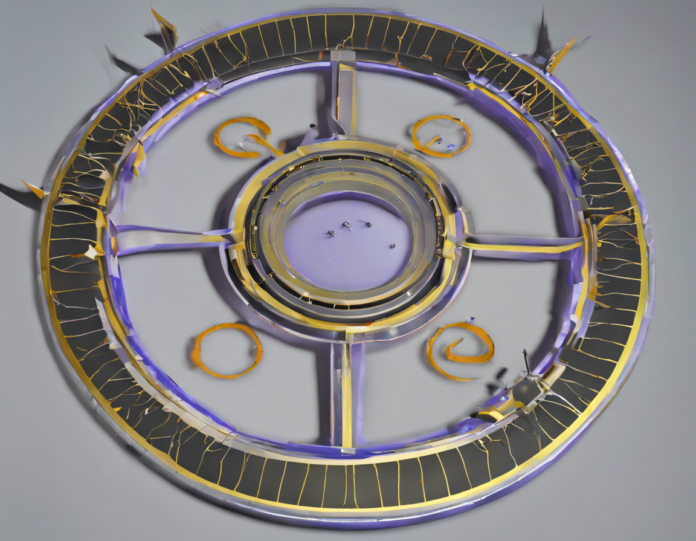Electric Field Due to a Charge Q at the Center
When studying electromagnetism, it is crucial to understand the concept of the electric field. One of the fundamental aspects of the electric field is how it is affected by a charge located at the center of a given system. In this article, we will delve into the electric field due to a charge Q at the center and explore its implications and applications.
Understanding the Electric Field
Before we delve into the specifics of the electric field due to a charge Q at the center, let’s first establish a foundational understanding of the electric field itself. The electric field is a vector field that describes the influence that an electric charge will exert on other charges within its vicinity. It is represented by electric field lines that point away from positive charges and toward negative charges.
The magnitude of the electric field at a given point in space is determined by the formula:
[
E = \frac{k \times Q}{r^2}
]
Where:
– (E) is the electric field
– (k) is Coulomb’s constant ((8.9875 \times 10^9 Nm^2/C^2))
– (Q) is the charge creating the electric field
– (r) is the distance from the charge (Q)
Electric Field Due to a Charge Q at the Center
Now, let’s focus on the specific scenario where a charge (Q) is placed at the center of a coordinate system. In this case, we are interested in determining the electric field at various points surrounding the charge (Q).
In this scenario, the electric field at a point located at a distance (r) from the charge (Q) at the center can be calculated using the same formula as above:
[
E = \frac{k \times Q}{r^2}
]
However, in this case, since the charge (Q) is located at the center, the electric field at any point will be radial (i.e., it will point directly away from or toward the charge (Q), depending on the sign of (Q)).
Implications and Applications
Understanding the electric field due to a charge (Q) at the center has several implications and applications in physics and engineering. Some of the key points to consider include:
-
Symmetry: The electric field due to a charge (Q) at the center exhibits spherical symmetry. This symmetry simplifies the calculations and allows for easier analysis of the electric field in various directions around the charge.
-
Electric Field Mapping: Knowing the electric field due to a charge (Q) at the center is essential for mapping out the electric field in a given region of space. This information is crucial for understanding how charges interact with each other and the forces they experience.
-
Gauss’s Law: The electric field due to a charge (Q) at the center plays a significant role in applications of Gauss’s Law, which relates the electric flux through a closed surface to the charge enclosed by that surface. Understanding the electric field in this scenario is essential for effectively applying Gauss’s Law in electromagnetism problems.
-
Electrostatic Shielding: The concept of placing a charge at the center can be applied in scenarios where electrostatic shielding is required. By strategically positioning charges, it is possible to manipulate the electric field in a way that provides shielding effects to protect sensitive components or systems.
Frequently Asked Questions (FAQs)
1. What is the significance of the electric field due to a charge Q at the center?
The electric field due to a charge Q at the center demonstrates spherical symmetry and is crucial for understanding the interactions between charges and the forces they experience.
2. How is the electric field calculated at a point surrounding the charge Q at the center?
The electric field at a distance r from the charge Q can be calculated using the formula E = k * Q / r^2, where k is Coulomb’s constant.
3. How does the electric field direction vary around a charge Q at the center?
The electric field direction will be radial, pointing directly away from or toward the charge Q, based on the charge’s sign.
4. Can the concept of the electric field due to a charge Q at the center be applied in practical engineering scenarios?
Yes, understanding the electric field due to a charge Q at the center is essential in various engineering applications, such as electric field mapping and electrostatic shielding.
5. How does Gauss’s Law relate to the electric field due to a charge Q at the center?
Gauss’s Law can be effectively applied in scenarios involving the electric field due to a charge Q at the center to analyze the electric flux through closed surfaces and the charge enclosed within them.
In conclusion, understanding the electric field due to a charge Q at the center is fundamental in electromagnetism and has wide-ranging implications in physics and engineering. By grasping the concepts discussed in this article, one can gain a deeper insight into the behavior of electric fields and their interactions with charges in various scenarios.

